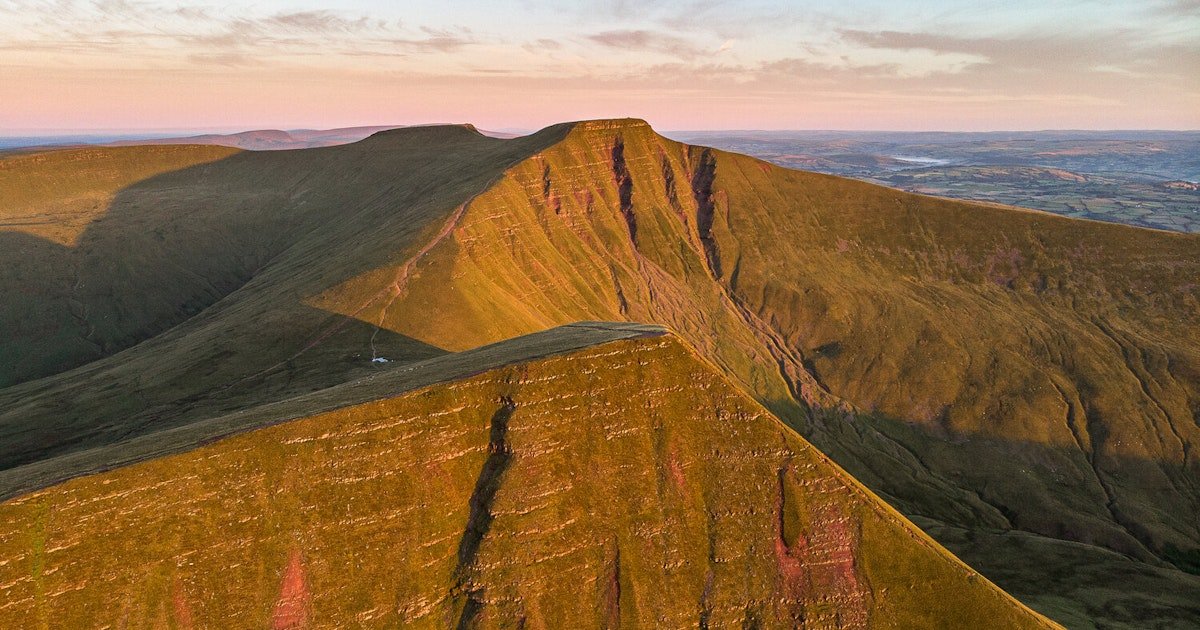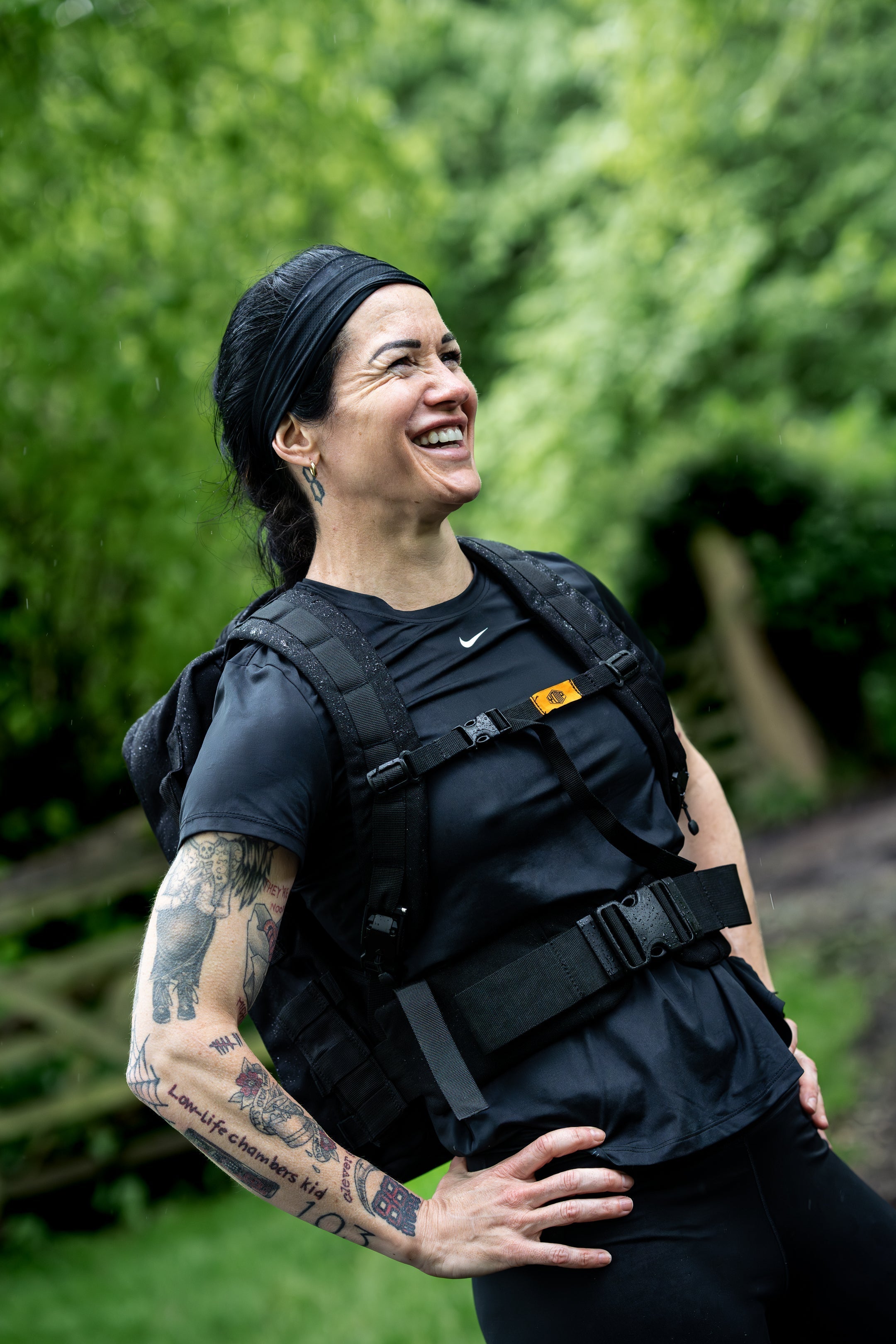Dancing with the Mountain: The Definitive Guide to Training for the Fan Dance

The Brecon Baptism
The mist sits low over Pen y Fan, Wales’ highest peak. You shoulder your ruck and feel its weight bite into your traps. A voice in your head mutters: It’s only 24 kilometres. But if you’ve ever tried it, you know the truth. The Fan Dance — the UK Special Forces’ legendary loaded march — is less “fun run” and more “character exam with scenery.”
Over the last 2 years, we estimate hundreds of customers have picked up our rucks and weight plates specifically to train for this event — which is brilliant, because load carriage practice is essential. Our pack makes training convenient and accessible. A heads up if you’re tackling the Fan Dance through an events company, especially in winter, you’ll almost certainly need a larger pack (50–60L) also loaded with useful kit on the day. That means your training should mirror reality: use the actual pack you’ll carry, and the exact footwear you’ll wear, in addition to training with our pack closer to the event.
What follows isn’t a training programme. It’s a survival map: science, soldiering, and facts stitched together. The goal? To give you the best shot at completing the Fan Dance well without wrecking your body, losing your head, or sacrificing your toenails.
The Triangle of Survival
Every Fan Dance finisher balances three edges of a triangle:

- The Engine (Aerobic Capacity)
- The Chassis (Muscles, Joints, Feet)
- The Operating System (Brain Under Fire)
Neglect one, and the mountain will collect its debt.
1. The Engine — Build Your Diesel, Not a Ferrari
The official research is blunt: aerobic fitness and body weight matter most for loaded marches. Big lifts don’t win here — a steady, efficient diesel engine does.
- Aerobic base: two easy sessions per week (45–75 mins). Conversation pace.
- Threshold work: one hill or tempo session (sustainably hard, not death sprints).
- Progressive rucks: one to two per week. Change only one variable at a time (load, pace, or distance).
* Metaphor check: You are a Land Rover Defender. Build torque, not top speed.
2. The Chassis — Feet, Calves, Quads, Hips
Every step with a 20-kg ruck multiplies ground forces through your skeleton. Most casualties? Blisters, knees, stress reactions.
- Calves: slow bent-knee raises (3×20).
- Hips: step-downs, lateral walks, single-leg RDLs.
- Trunk: suitcase carries, side planks.
- Downhill resilience: practice descents — short stride, soft knees, fast feet.
* Physics bonus: keep your ruck plate high and tight, close to your centre of mass. Every inch it drops is extra cost.
3. The Operating System — Headspace Under Load
Science shows cognition declines after hours of loaded marching. Translation: you’ll forget simple nav or make sloppy choices.
- Brain drills on rucks: check bearings, recall facts, or play “name three capitals starting with B.”
- Pacing discipline: nose-breathing early, micro-goals late.
- Self-talk: keep it factual: “small steps, breathe, next flag.”
This is less about heroism, more about admin under pressure.
The Route — Anatomy of the Fan Dance
- Outbound climb: Settle into diesel mode. Conserve.
- Jacob’s Ladder return: Short steps, upright torso, hands on quads. It will hurt. That’s normal.
- Final descent: Gravity is free time — if your quads still function. Fast feet, no reckless heel-striking.
Its a “game of attrition.” The mountain punishes early enthusiasm and sloppy descents more than anything.
Admin is Life (Hydration, Nutrition, Clothing)
- Hydration: 0.4–0.8 L/hr; sip, don’t chug. guidance: energy drinks are not rehydration.
- Electrolytes: sodium ~250–500 mg/hr if sweating heavy.
- Fuel: 40–60 g carbs/hr (bars, wraps, chews). Practise in training.
- Clothing: add a layer before you freeze, strip one before you’re soaked. Wales can change its mind hourly. Do not be excessive with layers you will blow hot within the first 10mins.
- Feet: liner sock + outer, tape hotspots early. Carry blister kit.
Formula 1 pit-stop mindset: micro-breaks of 60–90 sec every 45–60 min. Adjust, fuel, move.
Common (and Costly) Errors that will end the dance before its really begins
- Ego loads: training with max weight every week.
- Feet ignored: blisters are the #1 exit ticket.
- Weather denial: hot and cold injuries are preventable admin fails.
- Fuel roulette: GI disaster on race day.
- Starting too fast: Pen y Fan punishes hubris.
The Fan Dance Self-Audit (and Fix-It Menu)
1. Engine — Aerobic Capacity
Test:
- Can you run 5 km comfortably at a steady pace?
- Can you climb a hill for 10–15 min without red-lining?
Fix with:
- Steady-state runs/hikes (45–75 min).
- Hill intervals (e.g., 6×3–4 min uphill).
* Aerobic fitness is the strongest predictor of load march performance.
2. Chassis — Strength & Resilience
Tests:
- Can you do 8 controlled single-leg step-downs per side without wobbling?
- Can you march briskly downhill for 10 min without quad blow-up?
Fix with:
- Lunges & split squats (quads, glutes, balance).
- Calf raises (straight + bent knee).
- Step-ups with pack.
- Eccentric downhill step-downs.
* Lower-limb strength and calf/quad endurance reduce injury risk under load.
3. Operating System — Brain Under Load
Tests:
- Can you recall a 6-digit grid after a 30-min ruck?
- Can you keep pace steady for 90+ min?
Fix with:
- Cognitive drills during rucks.
- Practise pacing discipline.
* Loaded marches measurably impair decision-making — train both body and brain.
4. Admin — Kit & Comfort
Tests:
- Completed a 90-min ruck in your actual footwear with zero blisters?
- Can you refuel or layer up in <90 sec?
Fix with:
- Train in event-day kit.
- Rehearse pit-stop admin (layer changes, foot care, quick eats).
📚 Blisters and poor kit admin are leading causes of Fan Dance failures.

Closing Rally — The Dance Itself
The Fan Dance isn’t about beating the mountain; it’s about negotiating with it. You trade preparation for pain, and the Beacons always collect interest.
So train the triangle:
- Build your diesel.
- Fortify the chassis.
- Sharpen the operating system.
On the day: Carry your kit smart, move efficiently, and keep a calm head. The Yomp Co pack is brilliant for training — convenient, discreet, and loaded with the exact weight you need to build fitness without looking like you’re about to deploy. It gets the work done, and that’s why hundreds have used it to prepare for the Fan Dance.
But come event day — especially if you’re going through an events company and particularly in the winter — you’ll need a larger 50–60L pack filled with essential kit. Make sure you’ve trained in that pack also and in the footwear you plan to wear, so nothing feels alien when the mist closes in.
And when Jacob’s Ladder appears out of the fog — smile. That’s the dance. That’s why you came.




